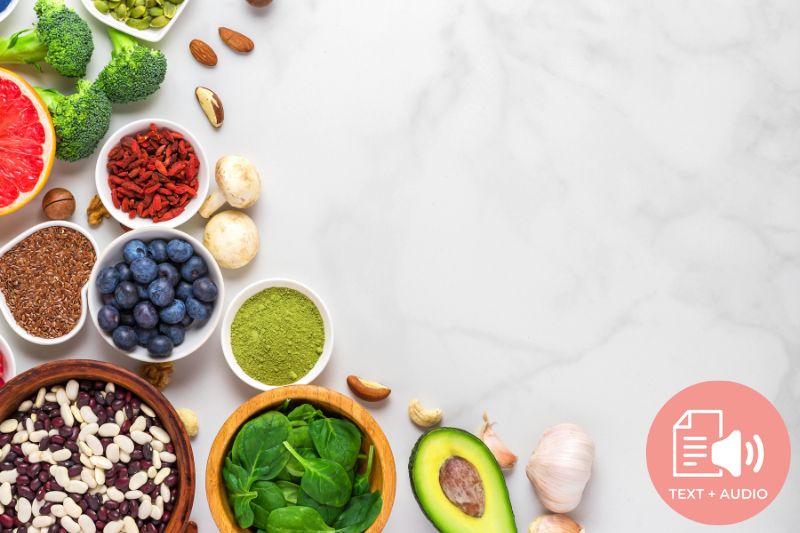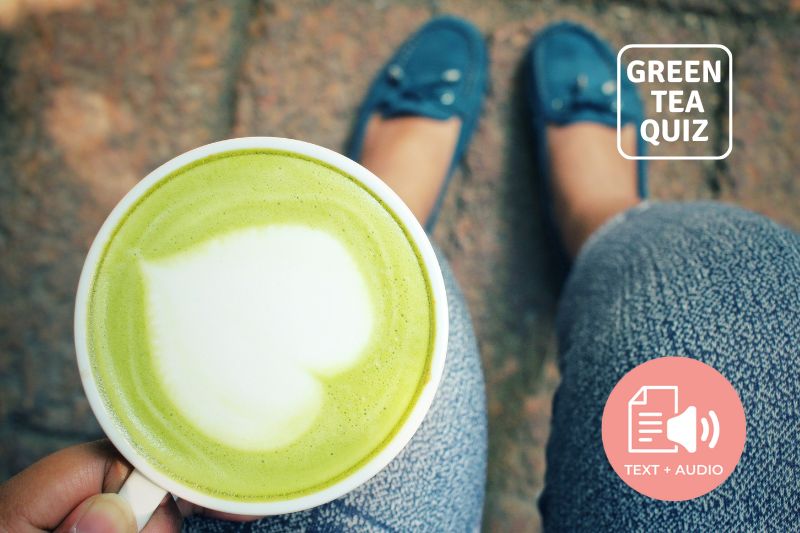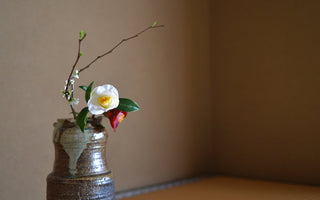A lot of people like Japanese green tea, and a lot of people like yoga, but not many people realize that the two share a lot in common. Although the green tea ceremony comes from Japan and yogic exercise is an ancient practice that comes from India, they have a lot of similarities. Below are ten surprising facts about how these two cultures connect.
Both traditions go beyond their physical forms—they represent philosophies and lifestyles that value mindfulness, balance, and respect for the present moment. In the Japanese tea ceremony, every gesture is intentional, fostering a deep awareness of one’s surroundings and the people sharing the experience. Similarly, yoga encourages practitioners to be present through controlled breathing, meditative focus, and purposeful movement. In this way, both practices create a bridge between the body and mind, transforming ordinary actions—whether sipping tea or holding a pose—into moments of reflection and harmony.
1. They are both ancient practices based on ceremony.
Yoga was developed in India over five thousand years ago as a means toward achieving spiritual enlightenment. Previously, only religious leaders could practice it, which included mantras, hymns, and religious rituals. Only in recent years did yogic practice take on the health significance that it has today. The Japanese tea ceremony is a traditional Japanese ritual that originated when tea (called matcha by the Japanese) was first brought to Japan from China in the eighth century. Like yoga, it originated as a religious ceremony but quickly spread to the public as people became more aware of its health benefits.
Both ceremonies are deeply rooted in symbolism and follow a structured sequence that reflects cultural values. In yoga, the flow of asanas (postures) is often guided by breathing techniques and mantras that align body, mind, and spirit, while in the tea ceremony, every step—from cleaning utensils to whisking matcha—is performed with precision to cultivate mindfulness and respect. These ceremonial roots remind practitioners that beyond their physical benefits, both traditions carry a spiritual essence, connecting individuals to centuries of cultural heritage and intentional living.
2. They both focus on harmony.
Yogic practice originated as a method of achieving spiritual enlightenment, which is a state of harmony with the gods. It is now practiced as a method to achieve harmony between mind and body. Harmony is also an integral part of the tea ceremony. For example, the ritual always includes serving sweets in order to balance out the bitter taste of the green tea.

In both traditions, harmony extends beyond personal well-being and into relationships with others and the environment. In yoga, practitioners are encouraged to embody principles like ahimsa (non-violence) and compassion, fostering peaceful interactions in daily life. In the tea ceremony, harmony is expressed through attentive hospitality, aesthetic appreciation, and creating a tranquil space where host and guests can share a moment free of distractions. Whether through a deep breath in a yoga pose or the quiet whisking of matcha, both practices invite participants to align themselves with a more balanced, mindful way of living.
3. They both help keep you relaxed.
Yogic exercise is a series of slow-moving stretches and exercises that encourage you to focus on your breathing and posture. It pulls you out of the stresses of your day and teaches you to meditate on the present moment. Also, few things are more soothing than a hot cup of aromatic green tea. Following your yogic practice with Japanese green tea will enhance the relaxation benefits.
The calming effect of both practices is also linked to their ability to lower cortisol levels—the hormone responsible for stress. Gentle yoga poses, combined with deep, rhythmic breathing, signal the body to shift from a “fight-or-flight” state into a “rest-and-digest” mode. Similarly, the act of preparing and sipping green tea becomes a meditative ritual, engaging the senses and slowing the pace of life. When paired together, yoga and green tea create a seamless transition from physical movement to mindful stillness, leaving you not only relaxed but also mentally refreshed and emotionally balanced.
4. They both help your energy levels.
Physical activity gets your blood flowing, improving circulation to your brain and lungs so you stay more alert and energetic. Green tea also boosts your energy levels because it contains a small amount of caffeine.
What makes this combination unique is that both yoga and green tea provide a sustained, balanced form of energy rather than the quick spike and crash often associated with other stimulants. Yoga’s controlled breathing and muscle engagement oxygenate the body, creating a natural vitality that can last for hours. Meanwhile, the moderate caffeine in green tea is paired with the amino acid L-theanine, which promotes calm alertness and steady focus. This means you can feel energized without the jittery side effects of stronger caffeinated drinks, making the pairing perfect for boosting productivity, mental clarity, and motivation throughout the day.
5. They both keep your heart healthy.
The benefits of physical activity on your heart health are well known, so it stands to reason that practicing yogic exercises regularly will keep your heart healthy. Green tea also has its documented benefits to your heart health. It helps improve your blood circulation, which in turn lowers your blood pressure and keeps your heart healthy. If you're concerned about circulation issues, consulting a vein specialist doctor can provide further insight and treatment options.
Yoga’s emphasis on controlled breathing and relaxation also supports heart health by lowering resting heart rate and reducing stress-related strain on the cardiovascular system. Green tea, rich in antioxidants like catechins, has been shown to help maintain healthy cholesterol levels and protect blood vessels from damage. When combined, these two practices create a powerful, natural approach to cardiovascular wellness—yoga helps condition the heart through movement and breath, while green tea nourishes it from within, making the duo a heart-friendly lifestyle choice.
6. They both keep your joints healthy.
Yogic practice employs gentle stretching to improve flexibility and keep your joints healthy. It also includes body-weight strength exercises, which increase bone density. Green tea also helps reduce inflammation in the joints, making it an excellent treatment for pain caused by arthritis. Following your yogic practice with a cup of green tea helps keep joints flexible and ache-free.

One of the key benefits of pairing yoga with green tea is their complementary impact on joint longevity. Regular yoga practice not only increases range of motion but also strengthens the muscles that support joints, reducing the risk of injury over time. Meanwhile, the polyphenols in green tea, particularly epigallocatechin gallate (EGCG), have been studied for their ability to protect cartilage and slow the progression of joint-related conditions. Together, they create a holistic approach to joint care—yoga builds the physical framework for mobility, while green tea works internally to keep inflammation at bay, ensuring your joints remain strong and pain-free well into the future.
7. They both help with pain relief.
Yogic practice has been shown to relieve many painful chronic conditions such as multiple sclerosis, cancer and certain auto-immune conditions. Furthermore, the anti-inflammatory agents in green tea help reduce pain not just in the joints, but in the entire body.
Yoga’s slow, mindful movements stimulate the release of endorphins—the body’s natural painkillers—while also improving posture and muscle alignment, which can help prevent tension-related discomfort. Gentle stretching and breathwork also promote better blood flow, aiding in the healing of sore or overworked muscles. Green tea’s anti-inflammatory compounds, particularly EGCG, work on a cellular level to reduce oxidative stress, which can contribute to chronic pain. When practiced together, yoga addresses pain from the outside in, while green tea works from the inside out, creating a dual-action approach to pain management that supports both immediate relief and long-term wellness.
8. They both keep you young.
The collectively improved circulation, heart and joint health, and mental health benefits that come from a regular yogic practice all combine to help you live longer and feel younger. Green tea also has its anti-aging benefits. The antioxidants in Japanese green tea once again play a positive role in your body, protecting your skin from sun damage and wrinkles when ingested and topically applied. This keeps you looking younger for longer.
Both yoga and green tea help slow the effects of aging by combating oxidative stress—a key factor in the breakdown of cells over time. Yoga’s stress-reducing effects help maintain hormonal balance, which supports healthy skin, hair, and overall vitality. Green tea’s catechins and polyphenols protect against free radicals, keeping cells healthier for longer and even promoting skin elasticity. When practiced together, yoga maintains youthfulness from the inside out through movement and mental clarity, while green tea nourishes and shields the body at a cellular level, creating a holistic, natural anti-aging routine.
(Read more about topic on my another article - How to Fight Against Anti-Aging by Consuming Japanese Green Tea Daily)
9. They both keep you fit.
The strength and flexibility training in a regular class help burn fat and calories, but it’s important to know that there are many different types of yogic practice to suit your different fitness needs. Some focus more on strength, while others include cardio elements. The emphasis on mindfulness meditation also carries over to your dietary choices—being mindful of your thoughts and actions helps you to be more mindful about the foods you are putting into your body. Green tea, on the other hand, is commonly used as an ingredient in dietary supplements for its fat-burning qualities. It specifically boosts your metabolism, meaning that your body burns calories and torches fat more quickly.
When combined, yoga and green tea create a balanced approach to fitness that supports both physical performance and healthy weight management. Dynamic yoga styles, such as Vinyasa or Power Yoga, increase calorie burn and build lean muscle, while gentler forms like Yin Yoga aid recovery and prevent injury. Green tea’s natural thermogenic effect helps the body continue burning calories even after exercise, making post-yoga tea an ideal complement to your workout. This synergy means you’re not only building strength and flexibility but also enhancing your body’s ability to use energy efficiently, keeping you fitter for longer.
(Read more about Japanese Green Tea and Diet in my other article)
10. They both fight cancer.
Stress, poor diet, excess body fat, and a weakened immune system are all risk factors for developing cancer. Regular yogic practice helps reduce your cancer risk by lowering your stress levels and keeping your body and immune system fit. Green tea can also reduce your cancer risk due to the cancer-fighting properties of antioxidants. By now it is well known that antioxidants are important in protecting your body from forming dangerous cancerous cells.
While neither yoga nor green tea should be viewed as a cure, both can play a supportive role in a holistic cancer-prevention lifestyle. Yoga promotes immune resilience by reducing chronic inflammation, improving lymphatic circulation, and encouraging healthy cellular function through stress reduction. Green tea’s potent compounds—especially epigallocatechin gallate (EGCG)—have been studied for their ability to inhibit the growth of certain cancer cells and protect DNA from damage. Together, these practices foster an internal environment that is less hospitable to disease, helping to strengthen the body’s natural defenses and support long-term health.
(Read more about this topic on my another article - Cancer and Japanese Green Tea - Why It is Good for Treatment and Prevention)
Conclusion
In short, yogic practice and the green tea ceremony have more in common than one might originally suspect. They both promote harmony and relaxation, they keep your body healthy, energized, fit, young, and pain-free, they fight cancer, and their positive effects actually work in tandem to enhance physical and mental well-being. More and more yogis have caught on to the benefits of adding green tea as a complement to their own personal yogic practice, and have even started including green tea as a part of their classroom instruction. Some simply recommend green tea to their students after class to enhance the positive benefits of practice and keep them going throughout the day, but more modern practices are increasingly leaving time at the end of class for the instructor and students to drink green tea together. This communal activity is reminiscent of the original tea ceremony, in which green tea and its well-known health benefits were meant to be enjoyed with company rather than alone. Although centuries ago they were separated by time and distance, both of these ancient traditions now benefit from being practiced together in the modern world.
By pairing yoga’s mindful movement with the meditative ritual of green tea, practitioners can experience a deeper sense of connection—to themselves, to others, and to the cultural wisdom that has shaped these arts for centuries. Each sip of tea after a yoga session becomes more than refreshment; it is a continuation of the practice, a moment of gratitude and presence. Whether enjoyed in a quiet corner at home or shared among fellow yogis, this union of traditions reminds us that wellness is not just about the body, but about nurturing the mind and spirit in harmony with the simple, beautiful moments of life.
References:
http://www.yogabasics.com/learn/history-of-yoga/
http://www.yogahealthfoundation.org/images/uploads/documents/YM_10Reasons.pdf
http://japanese-tea-ceremony.net/history.html
Get Free Bonus Books

Sign up for free to the Green Tea Club to get advice and exclusive articles about how to choose Japanese Tea, and tips, tricks, and recipes for enjoying Japanese tea.
About the author
Kei Nishida
Author, CEO Dream of Japan
Certification: PMP, BS in Computer Science
Education: Western Washington University
Kei Nishida is a passionate Japanese green tea connoisseur, writer, and the founder and CEO of Japanese Green Tea Co., a Dream of Japan Company.
Driven by a deep desire to share the rich flavors of his homeland, he established the only company that sources premium tea grown in nutrient-rich sugarcane soil—earning multiple Global Tea Champion awards.
Expanding his mission of introducing Japan’s finest to the world, Kei pioneered the launch of the first-ever Sumiyaki charcoal-roasted coffee through Japanese Coffee Co. He also brought the artistry of traditional Japanese craftsmanship to the global market by making katana-style handmade knives—crafted by a renowned katana maker—available outside Japan for the first time through Japanese Knife Co.
Kei’s journey continues as he uncovers and shares Japan’s hidden treasures with the world.
Learn more about Kei








I had never thought of the two like that before! Very well written article. Thanks for that valuable information!